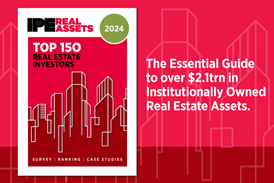Real estate allocations and confidence rise despite COVID-19 disruption
By Richard Lowe2020-12-11T16:06:00
Latest annual survey by Hodes Weill and Cornell University finds investors sticking with asset class
You have now reached your article limit
Already a registered user or subscriber? Sign in here
To continue reading, register free today for access
Registration also includes access to

Five reasons to register today
- Access IPE Real Assets articles
- Daily news alerts and updates
- Track what the world’s leading institutional investors are doing
- Learn about the latest industry research and market analysis
- Comprehensive archive of data and intelligence on investors and fund managers









